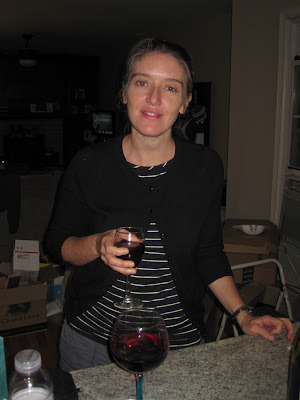I have known Dave, who we usually called D-Knick, since my junior year of college. I had taken a year off and gone to California the year before and returned to finish my philosophy degree, declaring myself a pacifist and occasionally sporting a turtleneck and suit jacket combination. D-Knick was a freshman when I met him. He had his hair cut into the white-boy version of a fade. He wore baggy hip-hop style clothes, a string of African beads around his neck, and a clip-on gold tooth. On paper we might not have appeared to be ideal roommates. In fact, we instantly hit it off and he became one of my closest friends.
We were both smokers trying to quit so we had chosen non-smoking dormrooms. The quitting idea went out the window less than an hour after we met. He smoked Kools and I smoked Camels. We also shared an appreciation for goofing off, beer, Public Enemy, nickel philosophy, and the occasional absurdist rant.
As a freshman D-Knick was for all intents and purposes, at least to himself, a young black man with a love for hip-hop. He took me to an amazing step show put on by the black fraternities. We used to drink Saint Ides malt liquor and spill out the first drop for the fallen, whoever they may be.
The album, House of Pain, put D-Knick in touch with his Irish Roots. He morphed into an Irish b-boy and found he liked Irish drinking songs almost as much as rap. We became blood brothers with real blood and drank Wild Irish Rose. We poured out a drop for the fallen.
D-Knick took on many guises over the years. He was an Irishman, an Irish bouncer, and an Irish republican radical. We drank a lot of Guinness with an occasional toast to the martyrs, whoever they may be. For a while, after college, he grew a long beard and took on the trappings of a hick. He wore flannel shirts and learned to hunt with a crossbow. Later he became a clean shaven police officer, an Irish cop, and an important member of the Emerald Society. He was married to Liz in a Scottish kilt and gave his kids Celtic names. He became an excellent chef who could talk of hot sauces and dry rubs the way some talk of wine.
Since college I have seen less of D-Knick. I lived most of that time San Francisco and he was in New Haven. I had a fantastic time when he came to visit me and I visited New Haven at least once a year to see him and Jeff. We would eat at Modern Apizza or Louis' Lunch and have a drink at Christopher Martin's, Cafe Nine, or Anna Liffey's. It always seemed like no time had passed, like we were the same friends we had been in college.
That was the amazing thing about D-Knick. For all his different looks and enthusiasms, he was always the same guy. He was like a house that gets a new coat of paint every year, maybe gets re-shingled or stuccoed now and then, but everything inside stays the same.
He was always D-Nick and I loved him. Most everyone who knew him loved him. He had a personal warmth about him that is rare. He was contagiously enthusiastic. He was full of jokes and laughs, as happy to put the joke on himself as on anyone else. At the same time he was upfront and real. He could talk about things that most people find it hard to talk about. I know he was a pretty conflicted guy much of the time. He didn't always know what was best for himself. I don't know how much help I was to him. I think I talked him out of quitting school once. But I know that when I was the most full of rage and confusion I have ever been, it was D-Knick who was able to get through to me. He helped me to take myself less seriously and be kinder to the people around me.
I hadn't spoken to D-Knick in quite a while when he called me in September. He told me he had seen both his parents die the previous year, been divorced and remarried, and now he had leukemia and bone cancer. He sounded amazingly strong and upbeat, joking and laughing like always, but the cancer sounded pretty bad.
Hilary and I took the train up from Washington D.C. to see him at the end of the month and to meet Nancy. They threw a party with his friend Jason and some of our mutual friends from the old days: Jeff, Shane, Mike Pacinda, Mike Hunter, Mark, and Dave, also known as Wavy. It was great to see D-Knick. He looked a little banged up from the chemo, but as usual he was the life of the party.
We returned on Sunday and spent a little more quiet time hanging out. He told us of his plans to protest a speech at Yale later in the week by Sinn Fein's Gerry Adams, for being too accommodating of the British; serious but laughing at himself at the same time. That was the last time I saw him. He was D-Knick to the end. I miss him. It is easier to drink to the fallen when you don't know who they are. The world is a colder place with him gone.























































































